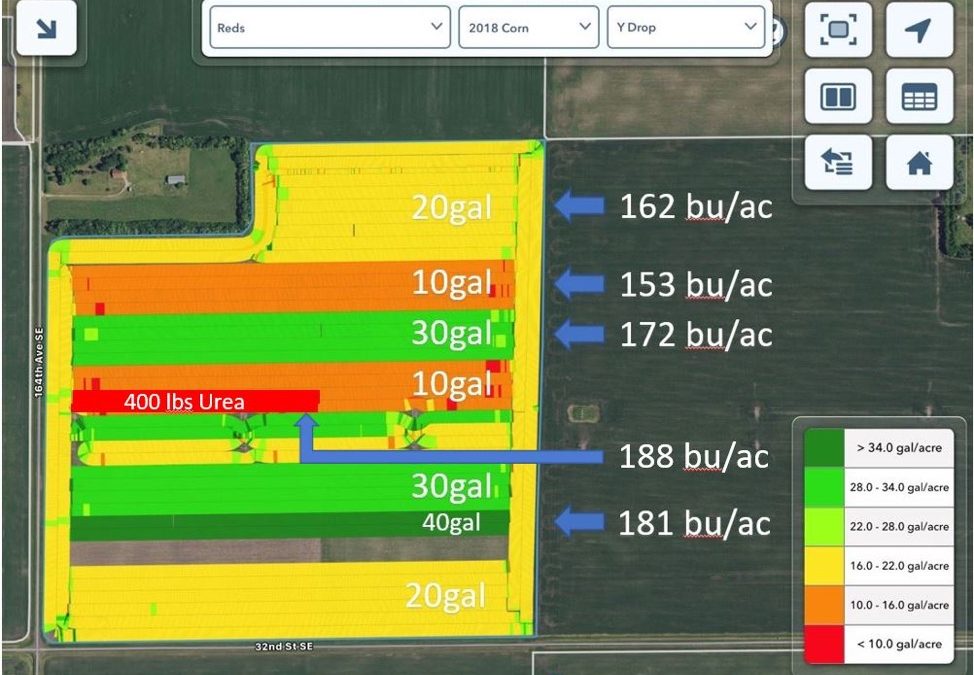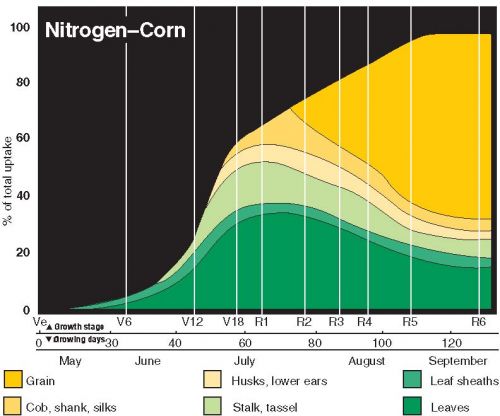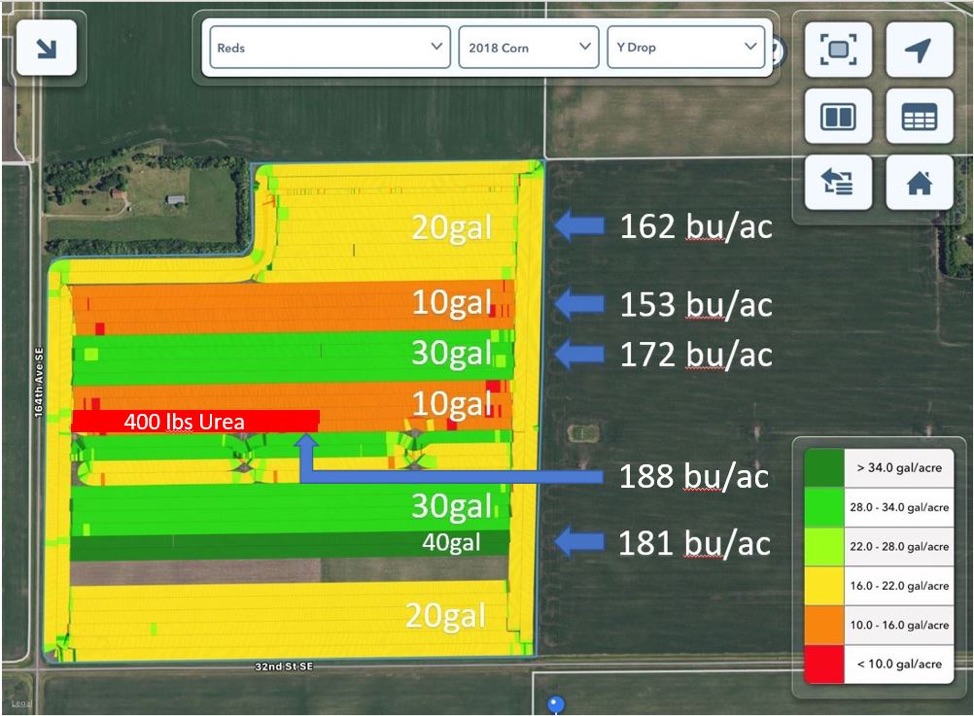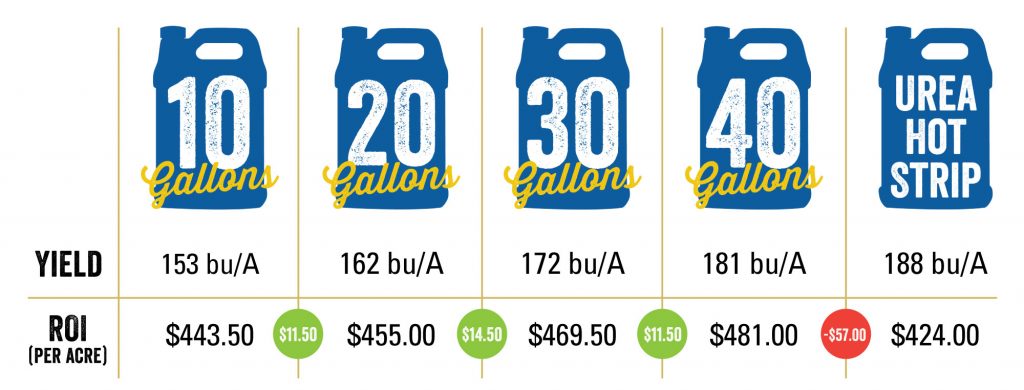Splitting Fertilizer Application to Gain Yield

It’s that time of year where growers are thinking about purchasing or allocating their fertilizer for 2020. Fertilizer is one of the highest and most variable input costs to growers today. Even with its high cost, it’s a very important part to a high-yielding crop.
Traditionally in a corn rotation, fertilizer would be put down in one single application in the fall or spring before planting. This method has gotten us a long way and is still necessary in some locations and farm operations. The challenging fall of 2019 did not allow for many acres of fall-applied fertilizer. This will put some pressure on the logistics of getting across acres this spring even with the great job our custom applicators do in our region. Split applying your N could be a great alternative if you’re not already applying that way.
Split Nitrogen Application to Gain Yield
As you can see from Figure 1, a corn plant takes up 75% of its nitrogen requirement after its V12 growth stage. With this information, growers have been splitting up their nitrogen applications by adding some to the planter and also with side-dress toolbars.
In order to increase the window of time to add split applications to an operation, products like the 360 Yield Center Y-Drop have come to market as a valuable tool. I have written about the Y-Drop system in the past (Y-drop Testing Shows Positive Impact in 2017 Yield and 360 Y-drop Can Improve Your Farm’s Profitability) but today I’m going to talk about the economics of different rates applied to gain yield.
Above is a screenshot of our Y-Drop application of 28% UAN along with the average yield for each rate. As you can see, we tested a range of Y-Drop rates from 10-40 gal as well as a high rate of urea as a hot streak. The hot streak is used to show potential yield when nitrogen is not the limiting factor. This is a great tool to use as a guide against your fertilizer program.
Here’s what this data is telling me:
- 188 bu/A hot streak is close to the highest yield this field has to offer.
- Overall, we could have added more nitrogen to raise our average yields to this level.
Adjusting for Future Seasons
These tests are a good way to adjust for seasons to come. Here’s how.
With a simple equation and some consistent numbers, we can see at what point the cost of increased product exceeds the dollars gained with yield.
For this example, I used $3.00/bu corn and $1.55/gal 28% UAN and $0.35/lb urea. These numbers will be different on every operation but by keeping them consistent we will see the effects of increased product on a relative ROI.
ROI Threshold
As you can see from the results, we have a consistent increase in yield as well as ROI for each increased rate of product except for the lowest ROI of the urea hot streak. We expected the urea hot streak to be the most uneconomical because of the extremely high rate. This information is huge when you look at the dollars.
From these trials we see a $37.50/A swing from 10 gal/A to 40 gal/A! This leads us to believe that with our average of 20 gal/A across the farm, we were a little short on our fertilizer needs for this season.
Consider the Full Picture
We would be remiss if we didn’t factor in both logistics and reduced speed when applying higher rates with a Y-Drop system. Considering those factors along with the ROI data from above, we plan to increase our base nitrogen rate and remain in the same range of 28% for this field.
Having a lower upfront investment in fertilizer allows us to have less risk in the cropping season. If the season is looking to be more or less productive, we have the ability to adjust our in-season rates to match the conditions.
Like always, the data is from a single year on a single farm so we cannot take the results as definite, but we can use them to guide our practices and narrow our inputs to the right amounts at the right time for that season.
If you have any questions about the testing we do on Carl’s farm or any questions related to precision agriculture and technology, give us a call at 701-282-7476.

 Mak
Mak











